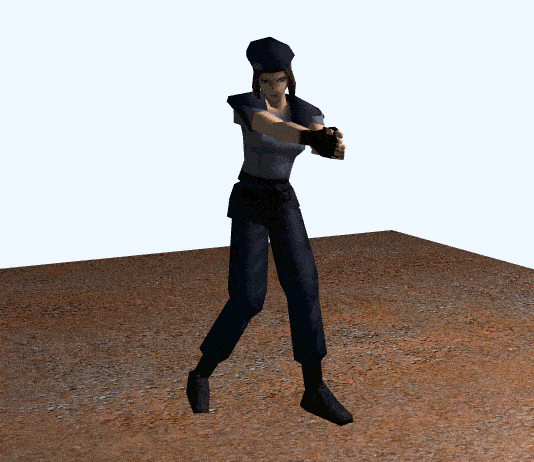Hello,
I want to import an armature without a mesh. I created a simple animation in Blender 2.67b (I tried it in Blender 3 too)

I exported it to COLLADA with settings:
I try to load it:
result = await loader.loadAsync("assets/jill/bones-armature.dae");
const armature = result.scene;
const clips = armature.animations;
console.log(clips);
But I have this error in the browser console:

bones-armature.dae
<?xml version="1.0" encoding="utf-8"?>
<COLLADA xmlns="http://www.collada.org/2005/11/COLLADASchema" version="1.4.1">
<asset>
<contributor>
<author>Blender User</author>
<authoring_tool>Blender 2.67.0 r57141</authoring_tool>
</contributor>
<created>2022-06-24T21:03:25</created>
<modified>2022-06-24T21:03:25</modified>
<unit name="meter" meter="1"/>
<up_axis>Z_UP</up_axis>
</asset>
<library_images/>
<library_animations>
<animation id="Armature_Bone_pose_matrix">
<source id="Armature_Bone_pose_matrix-input">
<float_array id="Armature_Bone_pose_matrix-input-array" count="3">0.04166662 2.083333 4.166666</float_array>
<technique_common>
<accessor source="#Armature_Bone_pose_matrix-input-array" count="3" stride="1">
<param name="TIME" type="float"/>
</accessor>
</technique_common>
</source>
<source id="Armature_Bone_pose_matrix-output">
<float_array id="Armature_Bone_pose_matrix-output-array" count="48">1 0 0 0 0 7.54979e-8 -1 0 0 1 7.54979e-8 0 0 0 0 1 1 0 0 0 0 7.54979e-8 -1 1.965258 0 1 7.54979e-8 0 0 0 0 1 1 0 0 0 0 7.54979e-8 -1 1.10677e-15 0 1 7.54979e-8 1.46596e-8 0 0 0 1</float_array>
<technique_common>
<accessor source="#Armature_Bone_pose_matrix-output-array" count="3" stride="16">
<param name="TRANSFORM" type="float4x4"/>
</accessor>
</technique_common>
</source>
<source id="Armature_Bone_pose_matrix-interpolation">
<Name_array id="Armature_Bone_pose_matrix-interpolation-array" count="3">LINEAR LINEAR LINEAR</Name_array>
<technique_common>
<accessor source="#Armature_Bone_pose_matrix-interpolation-array" count="3" stride="1">
<param name="INTERPOLATION" type="name"/>
</accessor>
</technique_common>
</source>
<sampler id="Armature_Bone_pose_matrix-sampler">
<input semantic="INPUT" source="#Armature_Bone_pose_matrix-input"/>
<input semantic="OUTPUT" source="#Armature_Bone_pose_matrix-output"/>
<input semantic="INTERPOLATION" source="#Armature_Bone_pose_matrix-interpolation"/>
</sampler>
<channel source="#Armature_Bone_pose_matrix-sampler" target="Bone/transform"/>
</animation>
<animation id="Armature_Bone_001_pose_matrix">
<source id="Armature_Bone_001_pose_matrix-input">
<float_array id="Armature_Bone_001_pose_matrix-input-array" count="3">0.04166662 2.083333 4.166666</float_array>
<technique_common>
<accessor source="#Armature_Bone_001_pose_matrix-input-array" count="3" stride="1">
<param name="TIME" type="float"/>
</accessor>
</technique_common>
</source>
<source id="Armature_Bone_001_pose_matrix-output">
<float_array id="Armature_Bone_001_pose_matrix-output-array" count="48">1 0 0 0 0 1 0 1 0 0 1 0 0 0 0 1 1 0 0 0 0 1 0 1 0 0 1 0 0 0 0 1 1 0 0 0 0 1 0 1 0 0 1 0 0 0 0 1</float_array>
<technique_common>
<accessor source="#Armature_Bone_001_pose_matrix-output-array" count="3" stride="16">
<param name="TRANSFORM" type="float4x4"/>
</accessor>
</technique_common>
</source>
<source id="Armature_Bone_001_pose_matrix-interpolation">
<Name_array id="Armature_Bone_001_pose_matrix-interpolation-array" count="3">LINEAR LINEAR LINEAR</Name_array>
<technique_common>
<accessor source="#Armature_Bone_001_pose_matrix-interpolation-array" count="3" stride="1">
<param name="INTERPOLATION" type="name"/>
</accessor>
</technique_common>
</source>
<sampler id="Armature_Bone_001_pose_matrix-sampler">
<input semantic="INPUT" source="#Armature_Bone_001_pose_matrix-input"/>
<input semantic="OUTPUT" source="#Armature_Bone_001_pose_matrix-output"/>
<input semantic="INTERPOLATION" source="#Armature_Bone_001_pose_matrix-interpolation"/>
</sampler>
<channel source="#Armature_Bone_001_pose_matrix-sampler" target="Bone_001/transform"/>
</animation>
</library_animations>
<library_controllers/>
<library_visual_scenes>
<visual_scene id="Scene" name="Scene">
<node id="Armature" name="Armature" type="NODE">
<translate sid="location">0 0 0</translate>
<rotate sid="rotationZ">0 0 1 0</rotate>
<rotate sid="rotationY">0 1 0 0</rotate>
<rotate sid="rotationX">1 0 0 0</rotate>
<scale sid="scale">1 1 1</scale>
<node id="Bone" name="Bone" sid="Bone" type="JOINT">
<matrix sid="transform">1 0 0 0 0 7.54979e-8 -1 0 0 1 7.54979e-8 0 0 0 0 1</matrix>
<node id="Bone_001" name="Bone.001" sid="Bone_001" type="JOINT">
<matrix sid="transform">1 0 0 0 0 1 0 1 0 0 1 0 0 0 0 1</matrix>
</node>
</node>
</node>
</visual_scene>
</library_visual_scenes>
<scene>
<instance_visual_scene url="#Scene"/>
</scene>
</COLLADA>



